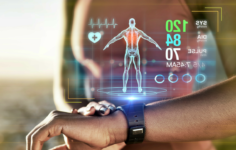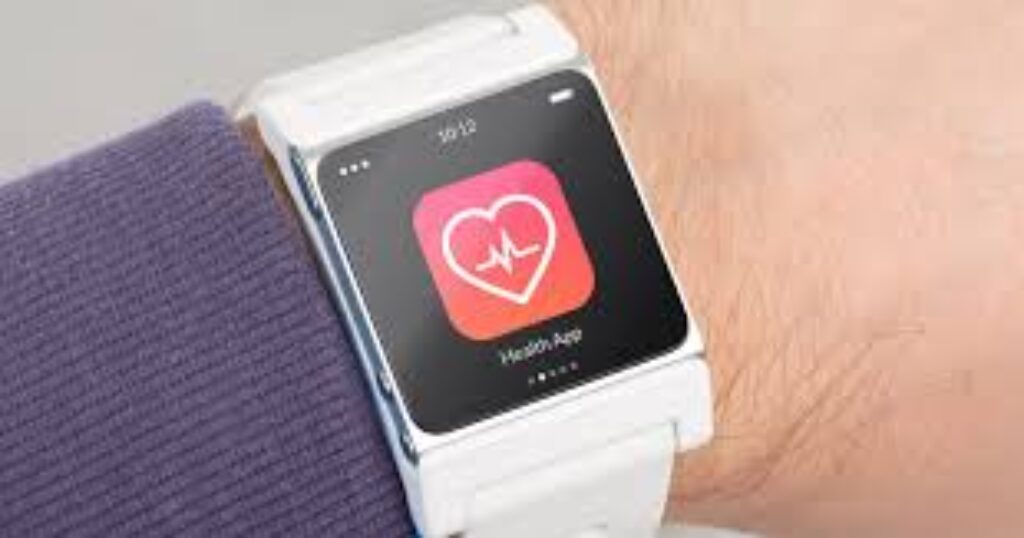
Apple Watch and the Future of Wearable Healthcare: Revolutionizing Personal Health Monitoring”
The Apple Watch has quickly become more than just a stylish accessory for timekeeping—it’s now a powerful tool for personal health management. With every new iteration, Apple continues to expand the capabilities of this sleek device, transforming it into a crucial player in the evolving landscape of wearable healthcare technology. In this blog post, we explore the ways in which the Apple Watch and other wearables are shaping the future of healthcare, offering insights into new possibilities for tracking and improving our health.
The Apple Watch’s Health Evolution
Since its launch, the Apple Watch has steadily integrated more advanced health-tracking features. Originally marketed as a fitness tracker, the device now offers a suite of health-related functionalities, such as heart rate monitoring, ECG readings, blood oxygen levels, and even the ability to detect falls. But what really makes the Apple Watch stand out is its growing role as a bridge between consumers and their healthcare providers.

With the latest updates, the Apple Watch not only tracks physical activity but also serves as a tool for early detection of potentially life-threatening conditions, such as arrhythmias. For instance, the ECG function, which was introduced with the Series 4, can detect irregular heart rhythms and alert users to potential heart issues, allowing them to seek medical attention before problems escalate.
Integrating Wearables with Healthcare Systems
Wearable devices like the Apple Watch are becoming an integral part of healthcare systems. Apple has worked to ensure that the data generated by the Watch can easily be shared with healthcare providers, giving doctors access to continuous, real-time information about a patient’s health. This opens the door for telemedicine to flourish, as healthcare providers can monitor patients remotely, improving the quality of care while reducing the need for in-person visits.
Data sharing capabilities are also helping researchers gain a better understanding of chronic conditions. By using wearable devices to gather vast amounts of real-world data, healthcare providers and scientists can analyze trends and develop personalized treatment plans for patients based on their individual health profiles. This could be a game-changer for individuals with conditions like diabetes, hypertension, or heart disease, who require constant monitoring to manage their conditions effectively.
The Role of Artificial Intelligence (AI) and Machine Learning (ML)
AI and ML are at the heart of wearable healthcare technology’s future. As wearables collect more data, they are becoming smarter, with AI algorithms analyzing the data to provide personalized health insights. For example, your Apple Watch could learn your typical daily activity levels and, based on your heart rate, sleeping patterns, and other metrics, offer tailored advice on when to exercise, sleep, or seek medical attention.
Moreover, AI is paving the way for predictive health analytics. In the future, your wearable device could not only monitor your current health but also predict potential health issues before they occur. By processing large amounts of data from millions of users, AI can detect early signs of conditions like strokes, heart attacks, and even mental health issues such as anxiety or depression.
Challenges and Ethical Considerations
Despite the vast potential of wearable healthcare devices, several challenges need to be addressed before they can reach their full potential. One of the most significant concerns is data privacy. With wearables continuously collecting sensitive health data, it’s crucial to ensure that this information is securely stored and not misused.
Moreover, while wearables can provide valuable insights into one’s health, they are not a substitute for professional medical advice. As wearable technology continues to advance, healthcare providers must strike a balance between relying on these devices for real-time data and maintaining the human element of diagnosis and treatment. It’s essential that healthcare professionals interpret the data properly, ensuring it supplements, rather than replaces, traditional methods of care.
The Future of Wearable Healthcare
The future of wearable healthcare is incredibly promising. Apple, along with other tech companies, is already pushing the boundaries of what is possible. Future wearables could integrate even more advanced sensors, tracking everything from blood sugar levels to mental health status, offering a more complete picture of an individual’s health.

In the coming years, we could see wearables capable of even more life-saving features, such as blood pressure monitoring or real-time glucose tracking for people with diabetes. The addition of 5G networks will further enhance these capabilities by providing quicker data transmission, enabling near-instantaneous updates to healthcare professionals.
As wearables become more deeply integrated into healthcare systems, it’s likely that we’ll see a shift from reactive to proactive healthcare. With the ability to detect health issues early and monitor chronic conditions in real-time, wearable devices could help individuals stay healthier longer, reduce the strain on healthcare systems, and lower medical costs overall.
Conclusion
The Apple Watch, along with other wearable technologies, is poised to revolutionize healthcare. By seamlessly integrating health monitoring, personalized insights, and data-sharing capabilities, these devices are changing the way we approach personal health management. As technology continues to evolve, we can expect even more advancements in wearable healthcare, making it easier for individuals to monitor their health and take control of their well-being like never before.
The future of wearable healthcare is not just about tracking steps—it’s about transforming the entire healthcare experience, from prevention and early detection to personalized treatment and care.








